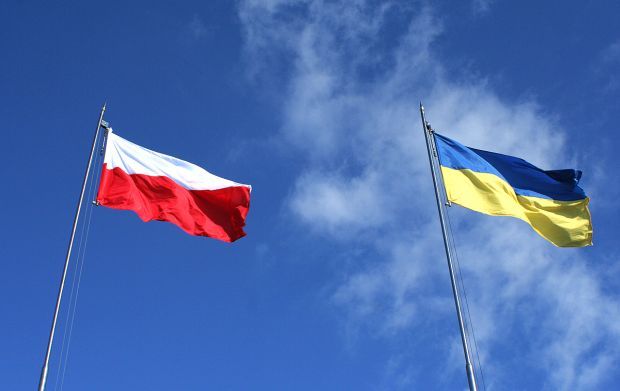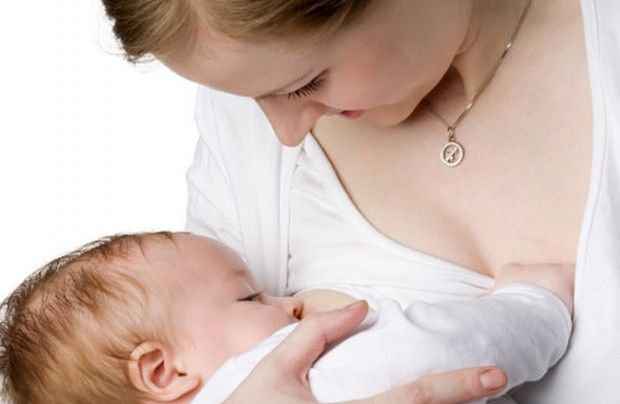
Reasons why Ukrainian population shrinks
This year the population of Ukraine has already decreased by 100,000 people, while the figure may double by year-end. UNIAN has polled a number of experts on the trends and reasons for the demographic drop in Ukraine.
Ukraine’s population has been shrinking, and that’s a fact. Today we are talking about 42.5 million Ukrainians, while by 2050, the demographers say the population will drop to 35-37 million people.
One of the reasons for this reduction is considered to be emigration. According to the official information of the State Statistics Service, Ukraine has a positive balance of migration (from January to July more than 192,000 left Ukraine and more than 195,000 arrived). However, the experts are skeptical about the objectivity of these data, based only registration papers in local migration offices. "Our state statistics, usually, take a better account of those who arrive than those who leave. Moreover, people often fail to even report on their departure," says CEDOS analyst Oleksandr Slobodyan.
The experts are convinced that for Ukraine, labor migration is a stable process that reflects the phenomena that have long prevailed in Ukraine: lack of good jobs, insufficient wages, etc.
In 2015, there were about 700,000 Ukrainian labor migrants abroad. Mostly, these are people aged 18-44 working in construction, agriculture, trade, production, and services, that’s according to a study by the International Organization for Migration (IOM) for 2014-2015. The updated research is scheduled to be released in the coming weeks. However, a spokesperson for the IOM office in Ukraine, Varvara Zhluktenko, has already reported that, compared with previous years, the number of labor migrants from Ukraine has increased. IOM is inclined to link this fact to the consequences of the latest crisis.
It should be noted that the mentioned IOM study puts in TOP 5 migration destinations for Ukrainians such countries as Russia (accepting the largest share of migrants), Poland, the Czech Republic, Italy, and Belarus.
An expert at Europe Without Barriers, Yekateryna Kulchytska, unfortunately, even today, although the Ukrainians have gradually begun to shift their focus onto the European countries, Russia has not ceased to attract Ukraine’s labor migrants. The analyst explains this by two factors. First, the lack of a language barrier is important: "If someone speaks Russian, they will have no language barrier in Moscow, while in the Czech Republic they will experience certain difficulties, and this can be a decisive factor." And, secondly, the "networks" set up earlier also have their influence - people choose destinations where they can meet some of their friends, neighbors or relatives.
The main destination for Ukrainian labor migrants in the European Union is Poland. This is mostly due to Poland’s geographical proximity and little language difference. Besides, a huge number of Ukrainian and European firms today offer employment in this country.

Yekateryna Kulchytska notes that Poland allowed Ukrainians in the framework of a visa-free regime, to cross into their territory with a biometric passport with no work visa requirement if a work permit or an invitation from the employer is available. It should be recalled that the visa-free travel for Ukrainians does not give them a right to work in the EU countries, only implying short-term travels. But in case with Poland, if a Ukrainian finds a legal job there and submits on time an application for a temporary residence permit, a permanent stay, or a long-term EU residence permit, their passport will be stamped accordingly, allowing them to stay in Poland after 90 visa-free days expire, until the application is fully considered.
Also, some can, for example, simply come to visit their relatives, live there for two weeks, and directly find a job with the employer. After that, they return to Ukraine, file all necessary documents, and legally enter Poland with a corresponding visa as a labor migrant, according to Kulchytska.
Europe without Barriers also notes that in countries like Italy, Spain and Portugal, where migrants from Ukraine often work for a long period of time, they prefer to settle completely. And this happens quite often.
Experts note that this trend has persisted throughout the past decade, therefore it is not connected with the deterioration of the economic situation in the country or the war. "Moreover, then such a labor migrant is somehow reunited with his family from Ukraine. As we can see, the number of issued residence permits is increasing, not for the purpose of employment, but for the purpose of family reunification," says Oleksandr Slobodyan.
They leave, not promising to return
According to IOM estimates, some 40% of Ukrainians working abroad do so without official registration. However, IOM assesses migration as a process that cannot be stopped, but there can be attempts to regulate it with maximum benefit for the migrants themselves, their home countries and the countries they are seeking to move to.
To this end, it is primarily needed to spread information about the risks of unregulated migration, for example, the potential threat to fall victim to human trafficking. Secondly, to exchange relevant information about actual demand in labor markets between countries of migrants’ origin and destination. Thirdly, to encourage “pendulum labor migration” (it is also called circular labor migration): people move prepared, with proper documents, and after their contract expires, they return home with their money earned, knowledge and skills.

"We also need favorable conditions in the country, in general, and in the place of residence of migrants, in particular. That’s for them to see the opportunity to invest the money earned and develop their own small businesses or farms, settle their life and the life of their families here in Ukraine," says Varvara Zhluktenko.
According to the already mentioned IOM study, the total amount of private money transfers to Ukraine in 2014, the year which was really difficult for the country, was at $2.8 billion. Another $4 billion was the volume of savings of Ukrainian labor migrants abroad. "And 21% of these people would like to invest their money in Ukraine. Of course, that’s given the necessary conditions and a favorable investment climate," says Zhlukentenko.
In July this year, Ukraine adopted a new Strategy for State Migration Policy, developed with the participation of the IOM. The document provides, in particular, for the promotion of repatriation and encouragement of the return of people of Ukrainian origin to Ukraine. "Implementation of this strategy will require the adoption of additional legislation, certain financing, and administrative apparatus, as well as successes in improving the investment, legal climate, healthcare and education systems - that is, all those reforms that concern any citizen of Ukraine or a foreigner, not just migrants," stressed the press-secretary of the IOM office in Ukraine.
Incidentally, as for foreigners, experts do not undertake to assess whether migrants compete with the Ukrainian population for jobs in Ukraine. At the same time, experts disagree with the statement that Ukrainian migrants take jobs away from residents of EU countries. "In fact, there are jobs that the locals just don’t want to do," says Oleksandr Slobodyan.
Demographic waves
The second factor of a significant reduction in the number of Ukrainians is the natural decline in the population (people die much more often than they are born). From January to July 2017, just over 209,000 babies were born, while more than 340,000 people died (the data are provided without taking into account the territory of the temporarily occupied Crimea and Donbas). The very birth rate is getting lower every year (in the same period last year, there were 227,000 newborns reported) and, according to demographers, this trend will prevail.

A senior fellow at the Institute of Demography and Social Studies Svitlana Aksyonova calls "demographic waves" the dominating factor of this worrisome prospect. The essence of this phenomenon is very simple: a decrease in the birth rate in a given period of time causes a reduction in the birth rate after a certain period in the future.
In the 20th century, Ukraine survived World War 2, after which there were very few newborns. Then, a generation later, few children were born in the 1980-1990s (up until 2001, there was a collapse in the birth rate due to different crises). "Now the children who were born in the 90s are entering their active child-bearing age. But there are a few of them, too... And we can’t claim that the birth rate can compensate for this somehow," Aksyonova said.
"As of today, the total fertility rate is about 15 children per 10 women. And we see no trends toward the increase in this intensity, "she complains.
It is curious to note that in recent years, up to 2016, there has been an increase in the birth rate among 35-39-year-old women. While in 2001, only nine out of 1,000 women of this age group decided to give birth (including first births, second, and third as well), by 2015 there were already 27 such women, so their share has tripled. Unfortunately, since 2016, the intensity of fertility began to decline for women of all age groups.
To make kids or not: factors of choice
In fact, a lot of factors affect the decision of a typical Ukrainian couple to make children, postpone the issue to more favorable times, or not to make kids at all. Economic and political instability, the housing problem, infrastructure issues, as well as difficulties in finding a place for a child in a kindergarten and school – all these factors repel the plans for procreation.
However, demographer Svitlana Aksyonova notes that it would be unethical and illegal to coerce, control, or somehow stimulate an increase in the birth rate. Each couple has the right to decide for themselves. "At the same time, the government’s task is to create all conditions for the family to realize its plans, so that the pairs feel the strength and see an opportunity to raise and educate children the way they want it," Aksyonova said.

Also, the scientist is convinced that the state should continue to allocate social payments for children. Today the premiums amount to UAH 41,280 – that’s the same sum for the first, second, and next newborn. This amount does not depend on the number of children in the family and is paid within 3 years.
It is worth noting that in matters of making children, Ukrainians tend to focus on European models. Back in the 1990s, many young people reconsidered their vision of the number of children in a family. Pairs wanted to have fewer children only to be able to provide their kids with a better start in financial terms.
Among other things, there is a tendency in Ukraine toward the increase in the age of mothers giving birth for the first time. Modern women try first to get education, assert themselves in their profession, and only then to realize themselves as mothers. Of course, compared to European countries, where women give birth at an average age of 31, Ukrainian mothers are still below on this scale with just an average age of 27 years. But it is likely that the age of childbearing in Ukraine will continue to increase, albeit more slowly than in Europe. "After all, Ukrainian women are attached to the family. Creating a family and giving birth to a child is one of their main values," Aksyonova said.
By the way, the migration factor also affects the birth rate, even if it is not about moving for good. "In any case, people planning to move, even just for education purposes with the view to return, postpone their childbearing plans for a later period," the demographer notes.
Given the latest data on the positive balance of migration, it is logical to assume that the composition of the country's population is actively changing. But without a census, it is impossible to assess the scope of changes objectively, as well as other demographic processes.
Experts are convinced that only a census can clearly show the real trends and factors affecting them. The United Nations recommends that such an assessment be conducted at least once every ten years. It's a shame though that the officials don’t seem to care: the first and so far the only census in independent Ukraine was carried out back in 2001.
Iryna Shevchenko

